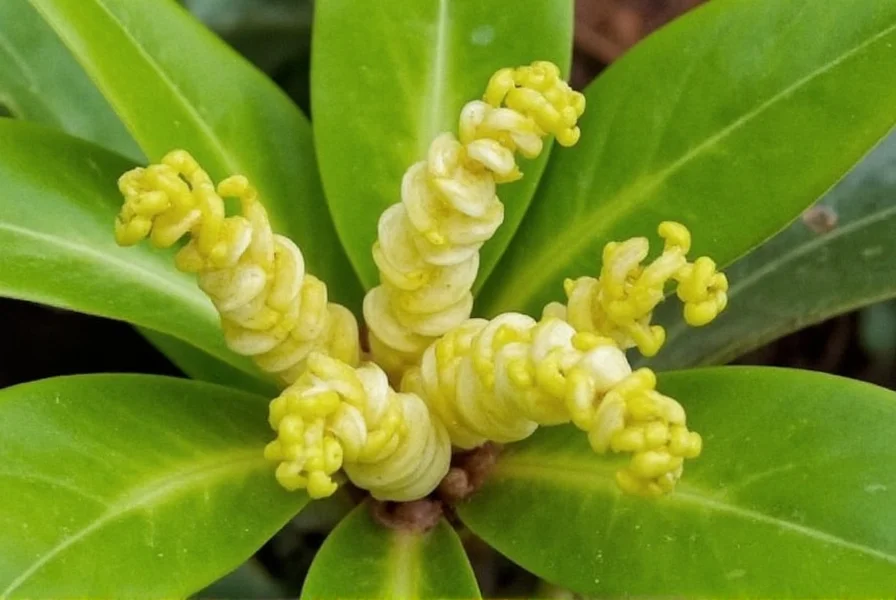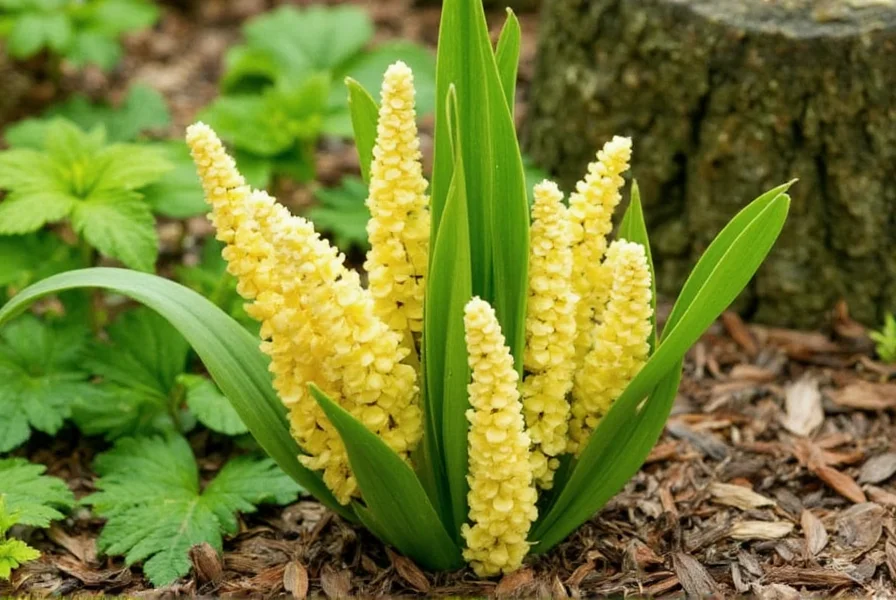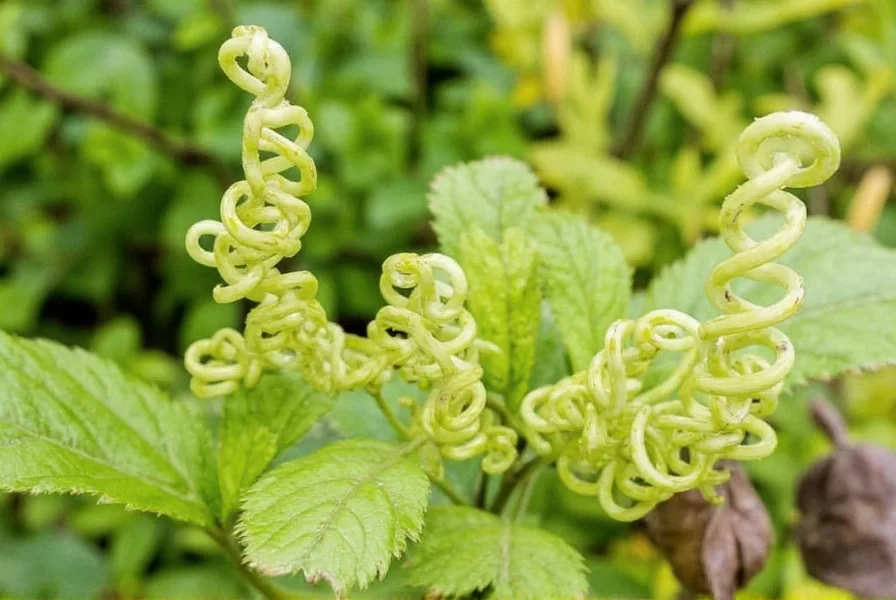Spiral ginger plants captivate gardeners and botanists alike with their architectural beauty and tropical flair. These remarkable plants belong to the Costus genus, which contains over 100 species native to tropical regions worldwide. While they share the common name "ginger" due to superficial similarities in their rhizomatous growth habit, spiral gingers are botanically distinct from the culinary ginger we use in cooking.
Botanical Classification and Identification
Spiral ginger plants belong to the Costaceae family, separate from the Zingiberaceae family that contains true culinary ginger (Zingiber officinale). The most commonly cultivated species include:
| Species | Common Name | Distinctive Features |
|---|---|---|
| Costus spectabilis | Yellow Spiral Ginger | Bright yellow cone-shaped flowers, reaches 6-8 feet tall |
| Costus woodsonii | Red Spiral Ginger | Vibrant red inflorescences, more compact growth habit |
| Costus pulverulentus | Silver Spiral Ginger | Silvery undersides on leaves, pink to red flowers |
| Costus barbatus | Screwpine Ginger | Orange-red flowers, distinctive spiral leaf arrangement |
Physical Characteristics That Define Spiral Ginger
The most striking feature of spiral ginger plants is their namesake spiral leaf arrangement. Unlike most plants that alternate leaves along the stem, Costus species arrange their leaves in a perfect spiral pattern that creates an elegant, architectural form. This distinctive growth pattern serves a functional purpose in nature, allowing maximum light exposure for each leaf.
The leaves themselves are typically lance-shaped, glossy, and can grow up to 12 inches long on mature plants. What truly sets spiral ginger apart are the spectacular cone-shaped inflorescences that emerge from the leaf axils. These structures, called bracts, protect the actual flowers inside. As the bracts open, vibrant flowers emerge in stunning displays of red, orange, yellow, or combinations of these colors.
Unlike culinary ginger, spiral ginger rhizomes are not aromatic and lack the pungent compounds that make Zingiber officinale valuable as a spice. The rhizomes serve primarily as storage organs for the plant's energy reserves.

Habitat and Growing Requirements
Spiral ginger plants are native to tropical regions of Africa, Asia, and the Americas, thriving in warm, humid environments with partial shade. In their natural habitat, they often grow along forest edges or in partially shaded areas where they receive dappled sunlight.
For successful cultivation outside tropical zones, consider these essential growing conditions:
- Temperature: Spiral ginger requires consistently warm temperatures above 60°F (15°C), with optimal growth between 75-90°F (24-32°C)
- Light: Prefers partial shade to filtered sunlight; direct afternoon sun can scorch leaves
- Soil: Rich, well-draining soil with high organic matter content
- Moisture: Consistently moist but not waterlogged conditions
- Humidity: Thrives in high humidity environments (50% or higher)
Gardeners in USDA zones 9-11 can grow spiral ginger outdoors year-round, while those in cooler climates can cultivate these plants in containers that can be moved indoors during colder months. When growing in containers, use a high-quality potting mix amended with compost and ensure adequate drainage.
Spiral Ginger vs. Culinary Ginger: Key Differences
Despite sharing the "ginger" name, spiral ginger and culinary ginger differ significantly in several important aspects:
- Botanical Family: Spiral ginger belongs to Costaceae family, while culinary ginger is in Zingiberaceae
- Leaf Arrangement: Spiral ginger has distinctive spiral leaf pattern; culinary ginger has alternate leaf arrangement
- Rhizome Characteristics: Spiral ginger rhizomes lack the spicy aroma of culinary ginger
- Primary Use: Spiral ginger is ornamental; culinary ginger is used as a spice and medicine
- Flower Structure: Spiral ginger produces cone-shaped inflorescences; culinary ginger has less showy flowers
Understanding these differences is crucial for gardeners who might mistakenly expect to harvest edible ginger from their spiral ginger plants. While both have rhizomes, only Zingiber officinale produces the pungent compounds that make ginger valuable in cooking and traditional medicine.
Cultivation and Care Guide
Successfully growing spiral ginger requires attention to its tropical origins. Here's a comprehensive care guide for both garden and container cultivation:
Planting Spiral Ginger
Plant rhizomes in spring after the last frost when soil temperatures reach at least 65°F (18°C). Position rhizomes horizontally with the growing points facing upward, covering with 1-2 inches of soil. Space plants 2-3 feet apart to allow for mature growth.
Watering Requirements
Maintain consistent soil moisture without waterlogging. Water deeply when the top inch of soil feels dry. During hot summer months, daily watering may be necessary. Reduce watering slightly during cooler months when growth slows.
Fertilization
Feed monthly during the growing season with a balanced, water-soluble fertilizer (10-10-10) or organic alternatives like fish emulsion. Avoid high-nitrogen fertilizers that can promote excessive leaf growth at the expense of flowering.
Pruning and Maintenance
Remove spent flower stalks to encourage additional blooming. Cut back damaged or yellowing leaves at the base. In tropical climates, spiral ginger grows year-round, while in marginal climates, it may die back during cooler months and regrow in spring.

Traditional and Ornamental Uses
While spiral ginger isn't used as a culinary spice, it has several traditional applications in its native regions and significant ornamental value:
- Ornamental Landscaping: Creates dramatic focal points in tropical gardens and poolside landscapes
- Floral Arrangements: The striking inflorescences make excellent cut flowers with long vase life
- Erosion Control: The dense rhizome network helps stabilize soil on slopes
- Traditional Medicine: Some indigenous cultures use specific Costus species for medicinal purposes, though research is limited
- Cultural Significance: Features in traditional ceremonies and folklore in various tropical cultures
When incorporating spiral ginger into landscape design, consider pairing it with other tropical plants like canna lilies, elephant ears, and ferns for a lush, jungle-like effect. The spiral pattern of the leaves creates beautiful visual rhythm when planted in groups.
Propagation Methods for Spiral Ginger
Gardeners can expand their spiral ginger collection through several reliable propagation methods:
- Rhizome Division: The most common and successful method. Divide established clumps in spring, ensuring each section has at least one growing point.
- Stem Cuttings: Take 6-8 inch stem cuttings with several leaves, remove lower leaves, and root in moist potting mix.
- Seed Propagation: Less common as seeds have variable germination rates, but possible with fresh seeds.
When dividing rhizomes, use a clean, sharp knife and allow cut surfaces to dry for 24 hours before planting to prevent rot. Plant divisions at the same depth they were growing previously, and keep soil consistently moist until new growth appears.
Common Challenges and Solutions
While generally robust, spiral ginger can face several challenges in cultivation:
- Leaf Scorch: Caused by too much direct sunlight; move to partial shade location
- Yellowing Leaves: Often indicates overwatering; improve drainage and reduce watering frequency
- Pest Issues: Aphids and spider mites may occasionally appear; treat with insecticidal soap
- Fungal Diseases: Prevent by avoiding overhead watering and ensuring good air circulation
- Slow Growth: May indicate insufficient light or nutrients; adjust growing conditions accordingly
In cooler climates, the most common issue is winter dieback. While spiral ginger may appear to die back completely in cooler temperatures, the rhizomes often survive and regrow when temperatures warm. Mulching heavily can provide additional winter protection in marginal climates.
Interesting Facts About Spiral Ginger
Beyond their ornamental value, spiral ginger plants offer several fascinating characteristics:
- The spiral leaf arrangement follows mathematical patterns related to the Fibonacci sequence
- Some species have medicinal properties being studied for potential anti-inflammatory applications
- The distinctive spiral growth pattern maximizes light exposure for photosynthesis
- In some cultures, spiral ginger flowers are used in traditional wedding ceremonies
- The cone-shaped inflorescences can last several weeks, providing extended ornamental value
Researchers continue to study various Costus species for potential applications in horticulture and possibly medicine, though more research is needed to verify traditional medicinal claims. The architectural beauty of these plants has made them increasingly popular in contemporary landscape design worldwide.
Frequently Asked Questions About Spiral Ginger
Is spiral ginger edible like regular ginger?
No, spiral ginger (Costus spp.) is not edible like culinary ginger (Zingiber officinale). While both have rhizomes, spiral ginger lacks the aromatic compounds that make culinary ginger valuable as a spice. Spiral ginger is grown primarily for ornamental purposes, and its rhizomes are not suitable for culinary use.
How tall does spiral ginger grow?
Most spiral ginger varieties reach heights between 4-8 feet when mature, depending on the species and growing conditions. Costus spectabilis typically grows 6-8 feet tall, while Costus woodsonii tends to be more compact at 4-6 feet. In ideal tropical conditions with rich soil and consistent moisture, some varieties can exceed 8 feet.
Can I grow spiral ginger in a container?
Yes, spiral ginger grows well in containers, making it suitable for gardeners in cooler climates. Use a pot at least 14-18 inches in diameter with excellent drainage. Container-grown plants require more frequent watering and feeding than those in garden beds. During winter in cooler climates, move containers indoors to a bright location where temperatures stay above 60°F (15°C).
How often does spiral ginger bloom?
In ideal growing conditions, spiral ginger produces flowers continuously throughout the warm season, typically from late spring through fall. Each inflorescence lasts several weeks, and new blooms continue to emerge from the leaf axils. In tropical climates with consistent warmth and moisture, flowering can occur year-round. Container-grown plants may have a more limited blooming period.
Is spiral ginger invasive in any regions?
Spiral ginger is not generally considered invasive in most regions where it's cultivated. Unlike some tropical plants, Costus species typically grow in clumps without spreading aggressively. However, in ideal tropical conditions with no frost, it can spread gradually through rhizomes. Always check with local agricultural extension services before planting any non-native species in your area.











 浙公网安备
33010002000092号
浙公网安备
33010002000092号 浙B2-20120091-4
浙B2-20120091-4